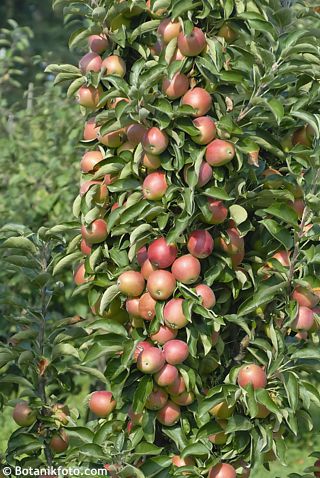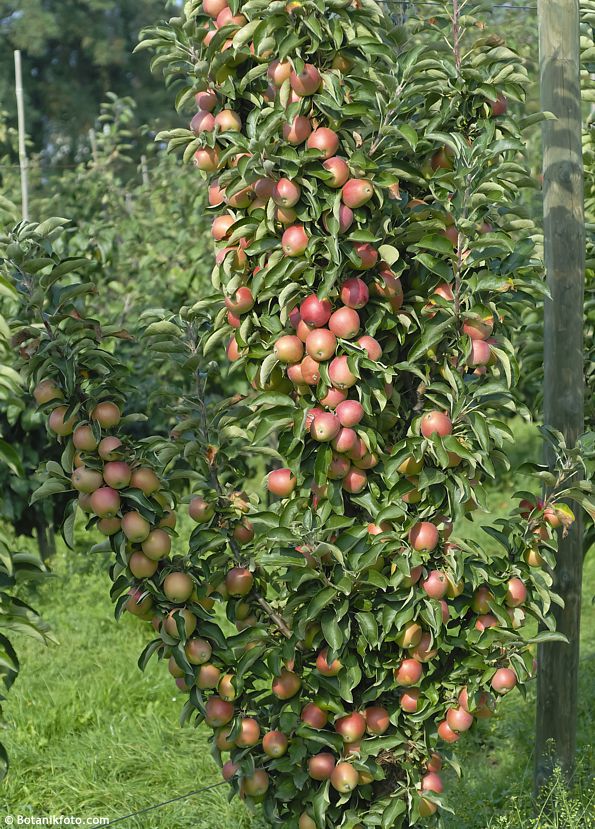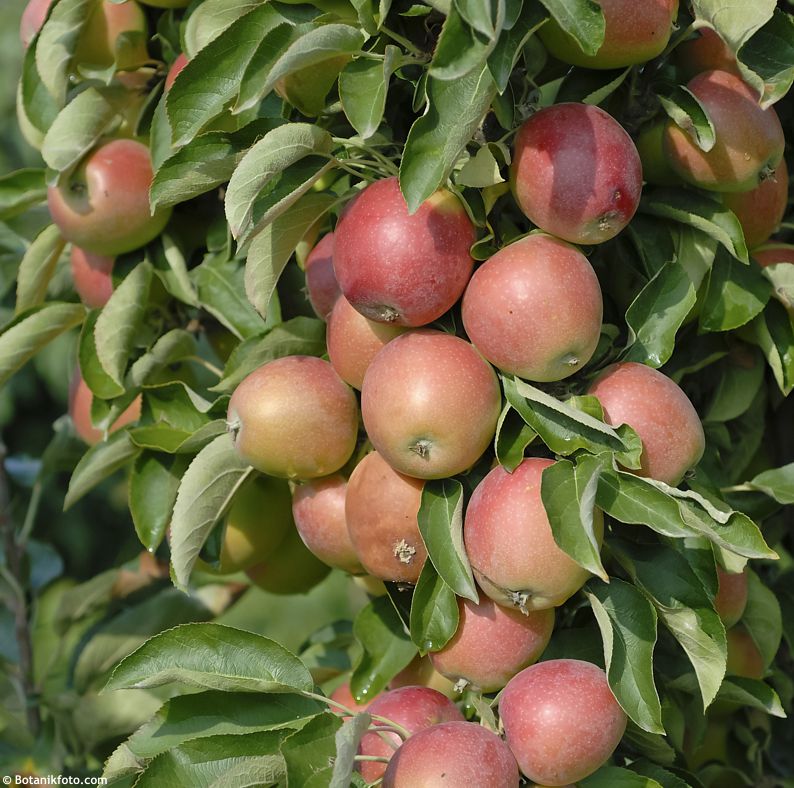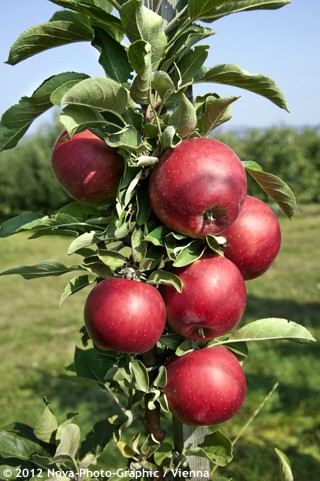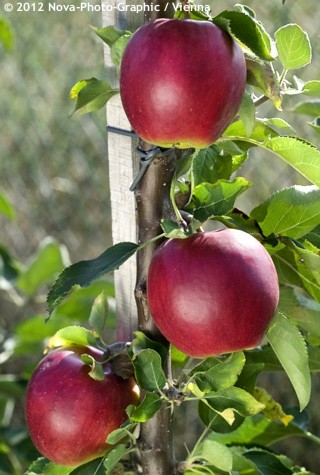Malus domestica 'POLKA' columnar apple - medium late


Malus
Polka is a columnar apple tree from the Ballerina® series. All its varieties come from the same parent - the Wijcik McIntosh variety. It originated as a sport of the McIntosh variety and exhibited strictly upright and columnar growth. Although the taste of the original sport is somewhat lacklustre, subsequent hybrids are crossed with renowned commercial varieties of great flavour and other qualities. Since all columnar apple trees are naturally dwarf or compact in habit, they are commonly grafted onto more vigorous rootstocks such as MM106 or MM111 for better growth.Most columnar apple trees are highly resistant to common diseases such as scab and powdery mildew. It is self-sterile and needs another variety of apple tree for pollination (from group A or B).
Apple trees will grow in almost any well-drained soil in full sun, but for best yields provide them with deep, fertile soil with some clay content in lower parts with adequate moisture after planting and fruit formation. They set fruit mainly on horizontal branches. Due to its columnar habit, it forms short, lateral, fruiting shoots, so pruning is usually not needed. It grows moderately and makes a handsome slender tree for a small garden or a large planter. Hardy to min. -30 °C (USDA zone 5).
Last update: 09-02-2023
Goods are shipped all over Europe. For Russia and U.K. and for further details please read about SHIPPING OPTIONS HERE.
Are you interested in a serious discount for orders NOV-FEB? Check your options here.
THE PRICES INCLUDE VAT of 15%. For quick conversion you can use 1 CZK = approx. 0.04 EUR
- STANDARD QUALITY - Plants of this group are 1st class quality with number of branches and overall density adequate to their size and age, considering they were container grown.
- DE LUXE QUALITY - This label guarantees a luxurious quality of manually selected plants that, compared to their height and age, are exceptionally dense and beautiful.
- EXTRA - These plants are usually mature and bigger specimens with exceptional overall appearance.
- STANDARD (as described in the plant form) means a tree with a trunk of 190-210 cm and a crown at the top, unless specified differently. The commercial size for trees is their girth measured in the height of 1m from ground.
- HOBBY - These plants are of the same quality as our standard-quality plants but younger and therefore cheaper.
- SHRUB - a woody plant with branches growing bushy from the ground level.
- HALF-STANDARD or MINI-STANDARD - a small tree with shorter trunk, its size is usually specified.
- FEATHERED - These are trees with branches growing already from the base of the trunk and up along the stem.
- GRASSES and PERENNIALS - Sizes given usually read the diameter of the pot or the clump, as specified.












